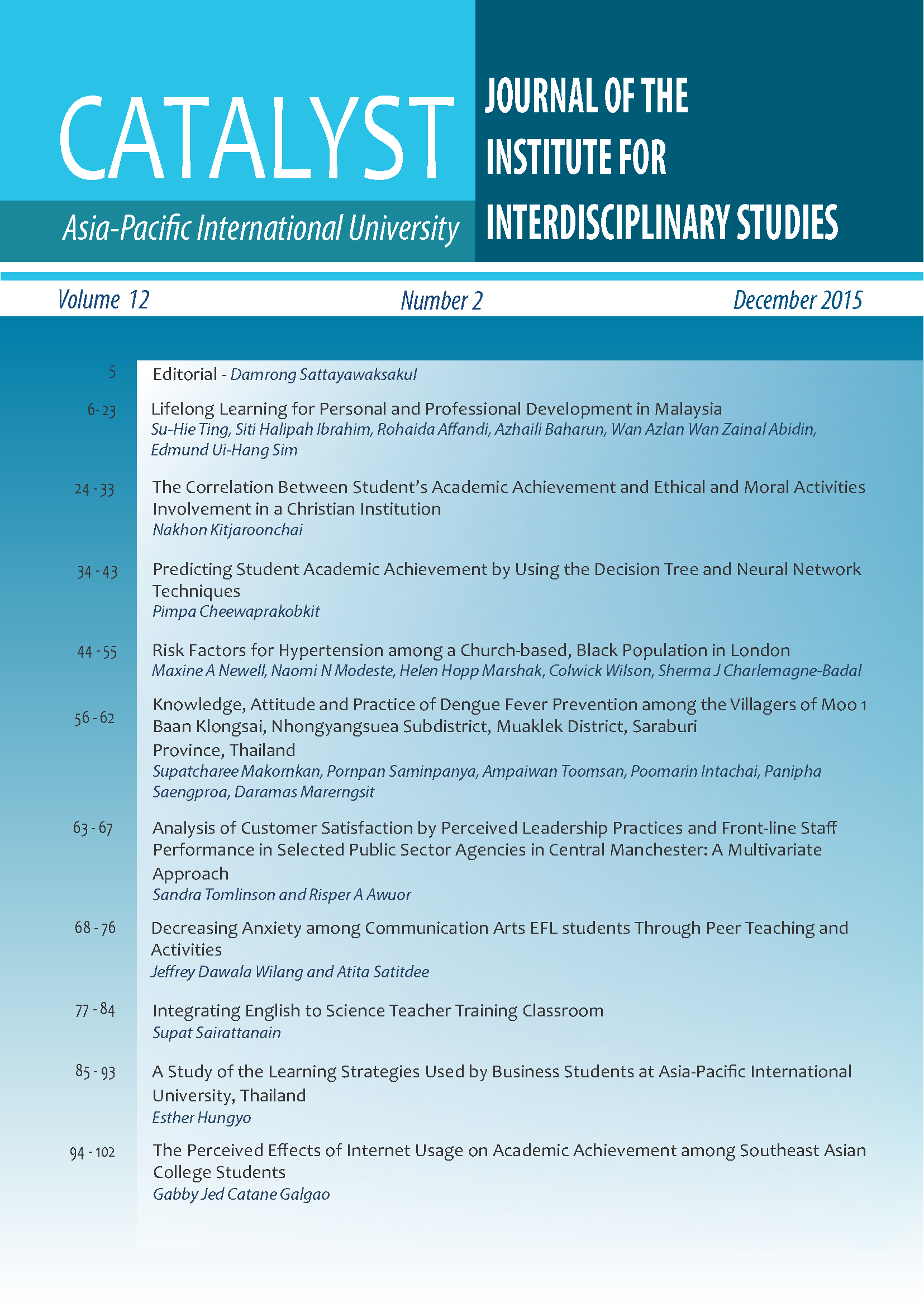Day-of-the-Week Effects in Thailand’s Corporate-Bond Market
Main Article Content
Abstract
This study tests for day-of-the-week effects in Thailand’s corporate-bond market, using the Thai Bond Market Association’s corporate-bond, zero-rate-return indexes of fixed durations and ratings. It is the first study for the market. More importantly, it is able to resolve changing-characteristics problems of bond returns in previous studies. During the sample period from Friday, June 15, 2007 to Friday, March 18, 2016 (2,142 observations), all the sample bonds show high, positive Friday returns; but the day-ofthe-week effects are only significant for some bonds. I empirically test for alternative explanations and successfully identify the one explanation that accounts for the significant effects. I also empirically show that if researchers had not treated the changing characteristics of bond returns appropriately, they could have concluded incorrectly that effects did not exist in Thailand’s corporate-bond market.
Article Details

This work is licensed under a Creative Commons Attribution-NonCommercial-NoDerivatives 4.0 International License.
Copyright: Asia-Pacific International University reserve exclusive rights to publish, reproduce and distribute the manuscript and all contents therein.
References
Alexander, G. J., & Ferri, M. G. (2000). Day-of-the-week patterns in volume and prices of Nasdaq high-yield bonds. Journal of Portfolio Management, 26(3), 33‒40.
Asian Development Bank. (2015). Asia Bond Monitor. November 2015. Retrieved from file:///F:/abm-november-2015.pdf.
Bespalko, M. (2009). Calendar effects in daily bond returns: Case of selected emerging economies. A Master’s Thesis. Kyiv School of Economics. Ukraine. Retrieved from http://www.kse.org.ua/uploads/file/Thesis_Mbespalko.pdf.
Bildik, R. (2001). Day-of-the-week effects in Turkish stock and money markets. Working Paper. Istanbul Stock Exchange. Retrieve from http://papers.ssrn.com/sol3/papers.cfm?abstract_id=259222.
Brooks, C., & Persand, G. (2001). Seasonality in Southeast Asian stock markets: Some new evidence on day of the week effects. Applied Economics Letters, 8(3), 155‒158.
Chen, C. C., Lee, C., & Wang, A. M. L. (2002). A note on stock market seasonality: The impact of stock price volatility on the application of dummy variable regression model. Quarterly Review of Economics and Finance, 42(1), 155‒162.
Chen, H., & Singal, V. (2003). Role of speculative short sales in price formation: The case of the weekend effect. Journal of Finance, 58(2), 685‒705.
Choudhry, T. (2000). Day of the week effect in emerging Asian stock markets: Evidence from the GARCH model. Applied Financial Economics, 10(3), 235‒242.
Compton, W. S., & Kunkel, R. A. (2000). Tax-free trading on calendar stock and bond market patterns. Journal of Economics and Finance, 24(1), 64‒76.
Compton, W. S., Kunkel, R.A., & Kuhlemeyer, G. (2013). Calendar anomalies in Russian stocks and bonds. Managerial Finance, 39(12), 1138‒1154.
Connolly, R. A. (1989). An examination of the robustness of the weekend effects. Journal of Financial and Quantitative Analysis, 24(2), 133-170.
Doyle, J. R., & Chen, C. H. (2009). The wandering weekday effect in major stock markets. Journal of Banking and Finance, 33(8), 1388‒1399.
Flannery, M. J., & Protopapadakis A. A. (1988).From T-bills to common stocks: Investigating the generality of inter-week return seasonality. Journal of Finance, 43(2), 431‒450.
Gibbons, M. R., & Hess, P. (1981). Day of the week effects and asset returns. Journal of Business, 54(4), 579‒596.
Jordan, S. D., & Jordan, B. D. (1991). Seasonality in daily bond returns, Journal of Financial and Quantitative Analysis, 26(2), 269‒285.
Kamath, R. R., Chakornpipat, R., & Chatrath, A. (1998). Return distributions and the day-of-the week effects in the Stock Exchange of Thailand. Journal of Economics and Finance, 22(2‒3), 97‒106.
Keef, S. P., & Roush, M. L. (2004). Day-of-the-week effects: New Zealand bank bills, 1985-2000. Applied Financial Economics, 14(12), 859‒873.
Keim, D. B., & Stambaugh, R. F. (1984). A further investigation of the weekend effect in stock returns. Journal of Finance, 39(3), 819‒835.
Khanthavit, A. (2016). Evidence of and Explanation for Day-of-the-Week Effects in Thailand’s Government Bond Market (Research Report). Bangkok: Faculty of Commerce and Accountancy, Thammasat University. DOI: 10.13140/RG.2.1.4806.8245
Khanthavit, A., & Chaowalerd, O. (2016). Revisiting the day-of-the-week effect in the Stock Exchange of Thailand. Journal of Business Administration, 39(151), Forthcoming.
Miller, E. M. (1988). Why a weekend effect? Journal of Portfolio Management, 14(4), 43‒48.
Nippani, S., & Arize, A. C. (2008). U.S. corporate bond returns: A study of market anomalies based on broad industry group. Review of Financial Economics, 17(3), 157‒171.
Nippani, S., & Pennathur, A. K. (2004). Day-of-the-week effects in commercial paper yield rates. Quarterly Review of Economics and Finance, 44(4), 508‒520.
Pettengill, G. N. (1994). An experimental study of the “blue-Monday” hypothesis. Journal of SocioEconomics, 22(3), 241‒257.
Sullivan, R., Timmermann, A., & White, H. (2001). Danger of data mining: The case of calendar effects in stock returns. Journal of Econometrics, 105(1), 249‒286.
Washer, K., Nippani, S., & Wingender, J. (2011). Day-of-the-week effect in the Canadian money market. Managerial Finance, 37(9), 855‒866.
White, H. (1980). A heteroskedasticity-consistent covariance matrix estimator and a direct test for heteroskedasticity. Econometrica, 48(4), 817‒838.


